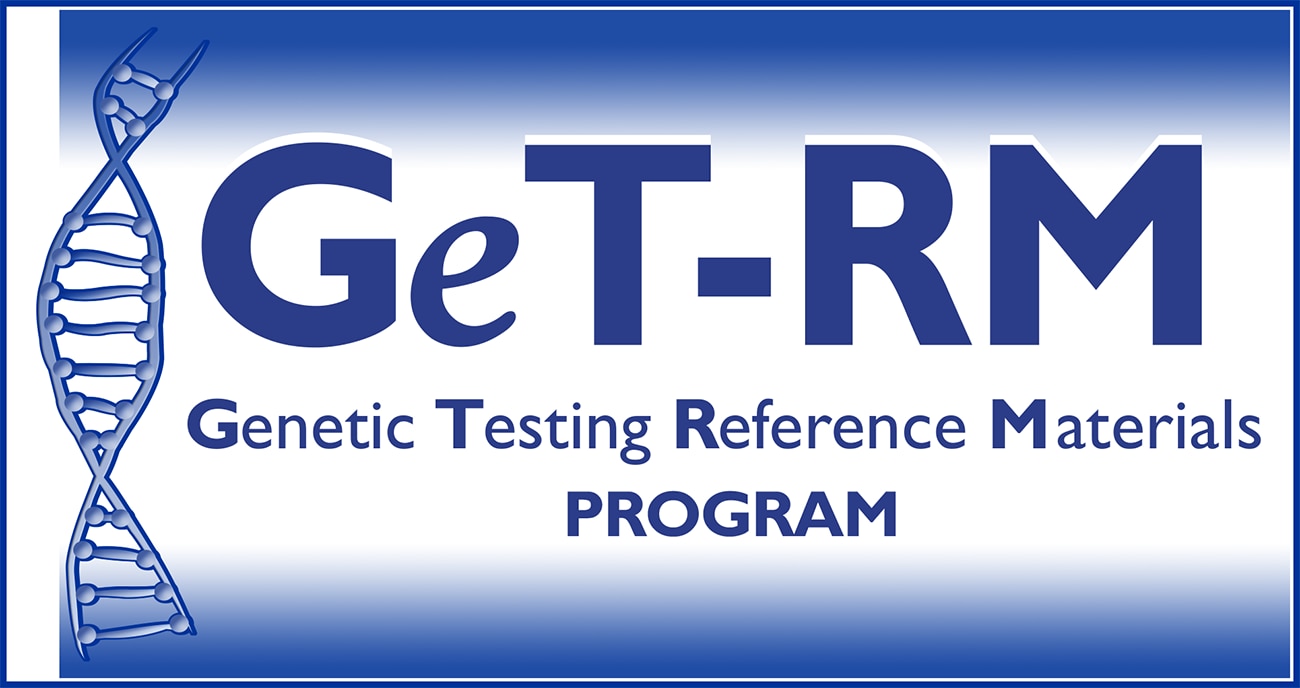About the Genetic Testing Reference Materials (GeT-RM) Coordination Program
Reference Materials are Essential for Quality Control in Testing

Reference and quality control (QC) materials are essential for many aspects of genetic testing. These materials, which are tested alongside patient samples, allow laboratories to detect errors due to test system failure or operator error. Reference materials are also useful for test development and validation, lot-testing of new reagent batches, and for proficiency testing/external quality assessment programs (PT/EQA).
Genetic tests are currently offered in clinical laboratories for over 10,000 human genetic disorders. However, for most of these tests, no characterized reference or QC materials are publicly available. Without publicly available materials, laboratories must adapt, and use limited genetic material and, in some cases, develop and run assays without adequate controls. Often, DNA derived from residual patient specimens, which is not readily available or renewable, is used as a reference material. Laboratories also use synthetic DNA or DNA isolated from cell lines. This lack of reference materials may affect the quality of available tests and could inhibit the development of new genetic tests.
Solving the Problem of Scarcity of Genetic Reference Materials
Since 1995, the Centers for Disease Control and Prevention (CDC) has been involved in efforts to develop appropriate and well–characterized reference materials for use by the genetic testing community. In 2004, the Genetic Testing Reference Materials (GeT-RM) Coordination Program was established at CDC, in partnership with the genetic testing community. The goal of this program is to coordinate a self-sustaining community process to improve the public availability of characterized genomic DNA materials. The program also facilitates information exchange between users and providers of reference materials. Although the program is coordinated by CDC, activities such as decisions about reference material priorities, specimen collection, material development, and characterization occur through voluntary collaborations with laboratories across the genetic testing community.
Making Validated Materials Available to the Laboratory Community
Cell lines with confirmed genotypes are considered the preferred type of control for DNA based genetic testing, as they most closely resemble an actual patient specimen. Thus, the GeT-RM Program’s efforts focus on this material type. The program has characterized more than 5800 loci in over 450 cell line based genomic DNA reference materials for a number of genetic disorders (see a list of GeT-RM publications), including: fragile X, disorders on the Ashkenazi Jewish Panel (Bloom syndrome, Canavan disease, Fanconi anemia, familial dysautonomia, Gaucher disease, mucolipidosis IV, Neimann Pick disease and Tay Sachs disease), cystic fibrosis, Huntington disease, MTHFR-related homocysteinemia, alpha1-antitrypsin deficiency, multiple endocrine neoplasia, BRCA1 and BRCA2-related cancers, Duchenne muscular dystrophy, myotonic dystrophy, Rett syndrome, three large-scale studies of DNA from 244 cell lines for a number of polymorphisms in 28 pharmacogenetic loci, other pharmacogentic loci, 108 samples for 11 HLA loci, 179 samples for difficult and rare CYP2D6 variants, and spinal muscular atrophy. Each of the genomic DNA materials were tested by up to 10 clinical genetic laboratories using a variety of genetic assays including DNA sequence analysis. These materials are publicly available from the Coriell Cell Repositories. Find reference materials characterized by the GeT-RM Program on this website.